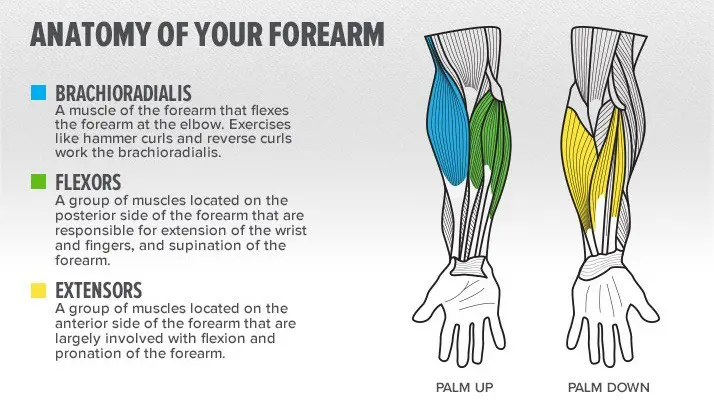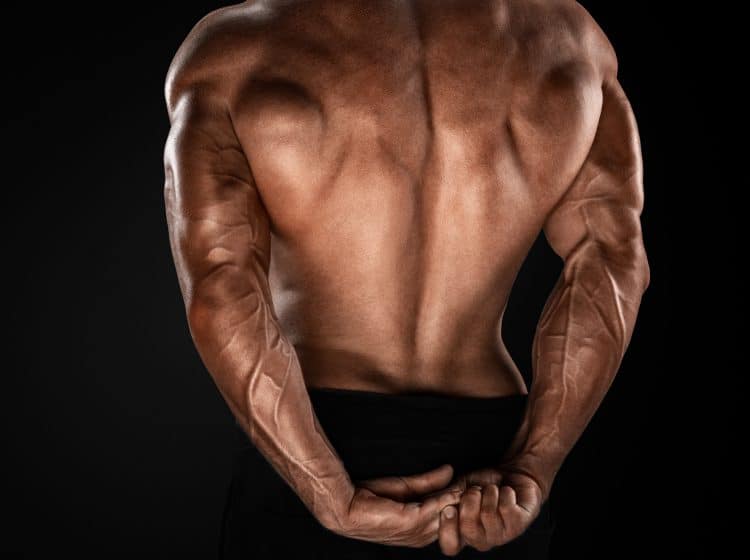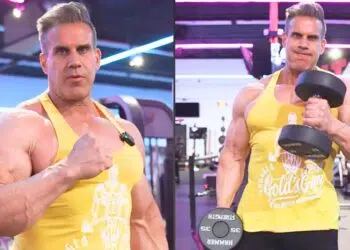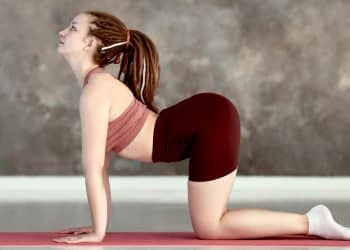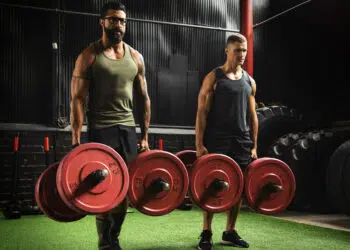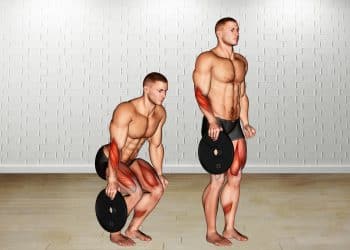There is no denying that the biceps are the most well-known muscle in the human body. Lifters and non-lifters alike are impressed by big, round biceps. Horseshoe triceps come a close second, and there aren’t too many exercisers who purposely skip arm day.
That said, while most exercisers do plenty of curls and pushdowns, far fewer spend much if any time training their forearms. Many assume that their lower arms will grow and get stronger if they do things like deadlifts, Kroc rows, and pull-ups.
While that can happen, especially if you’ve got great genetics, it’s not always the case. If you are serious about bulking up your lower arms, you need to train them.
There are plenty of great forearm exercises you can do that will build muscle size and strength. And you could also try fat bar training. However, one of the best forearm and grip exercises is one you can do at home.
In this article, we take a look at the wrist roller and reveal how to make and use one to build bigger, more muscular forearms and a powerful grip.
Wrist Roller Muscles Worked
Your forearms are made up of two sets of muscles – flexors and extensors. The flexors close your fingers and bend your wrists downward, i.e., during wrists curls. In contrast, the extensors open your fingers and bend your wrists backward, i.e., during reverse wrist curls. You can use a wrist roller to work both groups of forearm muscles.
Level Up Your Fitness: Join our 💪 strong community in Fitness Volt Newsletter. Get daily inspiration, expert-backed workouts, nutrition tips, the latest in strength sports, and the support you need to reach your goals. Subscribe for free!
While you don’t need to know the names of the muscles that make up the forearms (there ISN’T a quiz at the end of this article), here they are anyway (1):
Flexors: Flexor carpi ulnaris, palmaris longus, flexor carpi radialis, pronator teres, flexor digitorum superficialis, flexor digitorum profundus, flexor pollicis longus, and pronator quadratus.
Extensors: Brachioradialis, extensor carpi radialis longus, extensor carpi radialis brevis, extensor digitorum, extensor digiti minimi, extensor carpi ulnaris, anconeus, supinator, abductor pollicis longus, extensor pollicis brevis, extensor pollicis longus, and extensor indicis.
How to Make a Wrist Roller
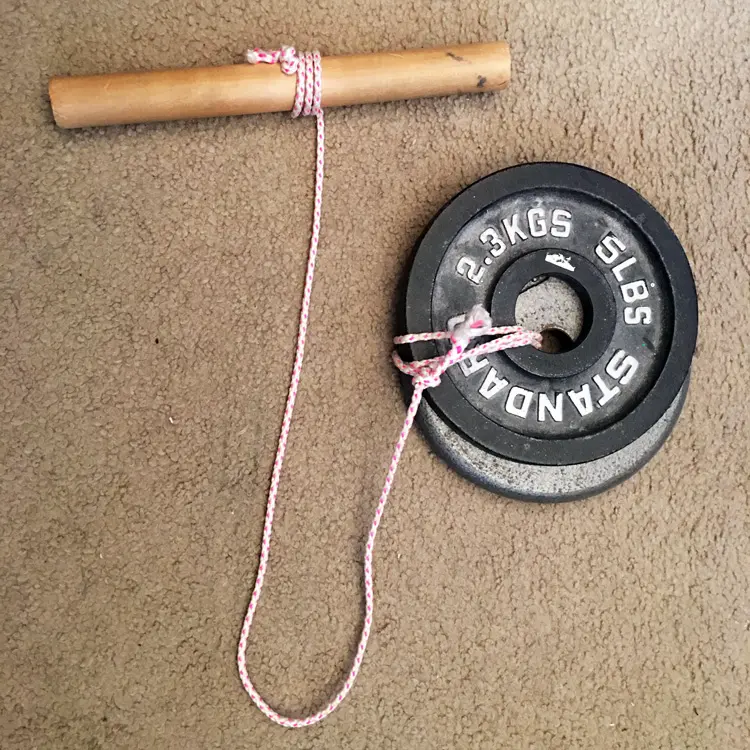
While you can buy readymade wrist rollers, and some gyms have them, too, it’s pretty easy to make one yourself. This will save you money and means you should be able to start working on your forearms and grip right away.
- Simply take a length of strong broomstick, about 24 inches should do, and drill a small hole in the middle. The thicker your handle, the harder your forearm and grip workout will be. You can also use a larger PVC pipe for a thicker grip.
- Next, tie a 4 to 5-foot length of strong cord to the handle, using the hole to secure one end in place. Check your knots to make sure the cord won’t come loose.
- Finally, tie a weight to the other end. Good options include a milk jug, water bottle, or even a grocery bag with a few cans inside. You could also use any weight plates or dumbbells you have around.
- If you wish, you can also wrap the handle with athletic grip tape, so your hands won’t slip.
Related: How To Build A Stronger Grip At Home
How to Use a Wrist Roller
Get more from using a wrists roller while keeping your risk of injury to a minimum by following these guidelines:
- Start with the cord unraveled and the weight resting on the floor. Hold the handle with an overhand grip. Make sure your hands are dry before you start, or use chalk to enhance your grip.
- Raise your arms in front of you, and then start rolling your hands forward (flexion) to wrap the cord around the handle. Use an alternating hand action, and try to wrap as much cord as you can per wrist flexion, i.e., use a large range of motion.
- Continue until you have done the desired number of reps or the weight reaches the handle.
- Next, slowly lower the weight back down to the floor. Don’t just drop the weights!
- If shoulder strength becomes a limiting factor, you can do this exercise with your arms down and your hands in front of your hips. However, you may need to stand on a bench if you want to use a long cord.
You can (and should) also do this exercise by rolling your wrists backward, i.e., forearm extension. This works the muscles on the top of your forearms.
Wrist Roller Benefits and Drawbacks
Benefits
Not sure if it’s worth adding wrist rolling to your arm workouts? Consider these pros and cons:
Train your forearms and grip at home – while there is nothing wrong with working on your grip at the gym, it means your arm workout could start to become overly long. With a homemade or store-bought wrist roller, you can train your lower arms at home, which may be more convenient.
Improved workout performance – a weak grip could stop you from getting the most out of your back and biceps training. If your forearms fail, your set will come to an early end, leaving the target muscles understimulated. Yes, you COULD wear lifting straps, but a better option would be to increase grip strength.
Better sports performance – a lot of sports require a strong grip. Most contact sports involve gripping your opponent, e.g., judo, wrestling, football, and MMA. Rock climbing, weightlifting, and powerlifting also need a strong grip. Using a wrist roller could be the difference between winning and losing.
More stable wrists– a lot of lifters wear wrist wraps to support their joints. Newsflash: if you’ve got muscular forearms, you may be able to support your wrists yourself. Of course, if you’ve got joint issues or are lifting very heavy weights, there is nothing wrong with wearing wrist wraps. But, that said, many exercisers would benefit from building their forearms so they can support their wrists with muscle strength.
Drawbacks
While training with a wrist roller is mostly beneficial, there are drawbacks too:
Watch those toes – truthfully, there are very few if any disadvantages to using a wrist roller. One conceivable issue you could experience is dropping the weight on your toes if you lose control during the descent. Needless to say, the easiest way to avoid this is to stand with your feet apart so, even if you do drop the weight, it will miss your feet.
Level Up Your Fitness: Join our 💪 strong community in Fitness Volt Newsletter. Get daily inspiration, expert-backed workouts, nutrition tips, the latest in strength sports, and the support you need to reach your goals. Subscribe for free!
Too heavy, too soon – it’s tempting to use too much weight while using a wrist roller. Going too heavy could place an excessive strain on your fingers, wrists, elbows, and shoulders. You could also find yourself cheating the weight up instead of using your forearms. Focus more on your technique than the amount of weight you’re lifting to get better results with a lower risk of injury.
7 Wrist Roller Variations and Alternatives
Using a wrist roller is a highly effective way to build bigger, more muscular forearms and a cast-iron grip. However, that doesn’t mean it’s your only option. There are several variations and alternatives you can use to keep your workouts productive and interesting:
1. Wrist Curls / Reverse Wrist Curls
In the same way you can use a wrist roller to work your forearm flexors and extensors, you can do the same thing with wrist curls. Done with an underhand, palms-up grip, wrist curls work your forearm flexors. However, if you turn your hands over and use a palms-down, overhand grip, you’ll be working your forearm extensors instead.
You can do both types of wrist curls using a barbell or dumbbells as preferred.
Learn how to do wrist curls and reverse wrist curls in these guides.
2. Hammer Curls
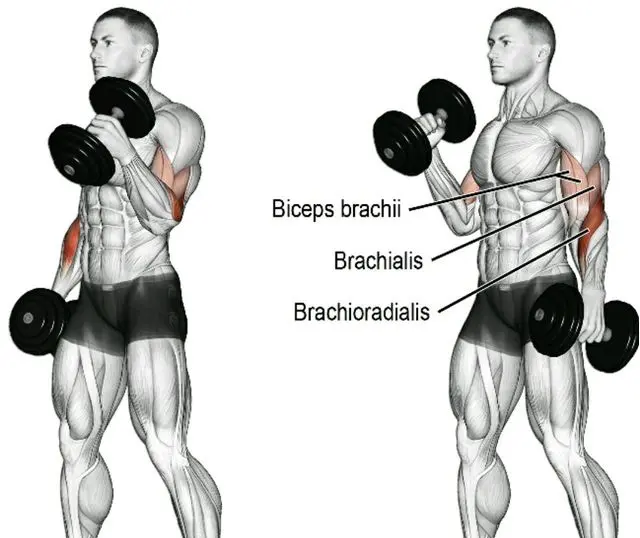
Hammer curls are a real triple-threat arm exercise. Not only do they work your biceps, but they also involve your brachialis and brachioradialis muscles. Trained together, these muscles contribute a lot to the size and strength of your upper AND lower arms. Don’t choose between biceps or forearms; train them both together! You can do hammer curls with dumbbells or using a cable machine fitted with a rope handle.
Learn more about hammer curls here.
3. Reverse Curls
Reverse curls are an isometric forearm extensor exercise. During this movement, you must do your best to keep your wrists straight while your biceps, brachialis, and brachioradialis muscles flex your elbow. Like hammer curls, reverse curls provide a lot of arm training benefits for your workout buck.
You can do barbell, EZ bar, dumbbell, and cable reverse curls, and also using a preacher bench.
Learn how to do reverse curls here.
4. Farmer’s Walk
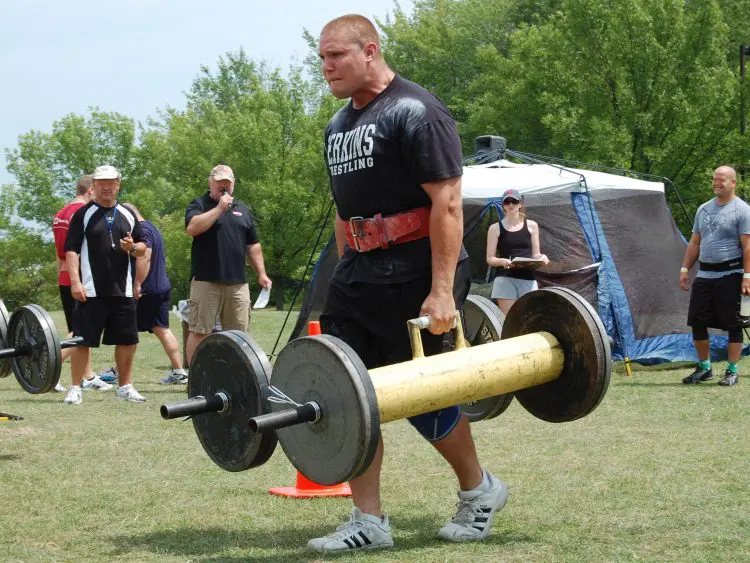
It’s pretty obvious that the farmer’s walk and wrist roller are two very different things. However, both are great for building bigger forearms and a firmer grip. As an added benefit, farmer’s walks are also an excellent conditioning exercise and, done with a single dumbbell or kettlebell, are a kick-ass core exercise too.
Related: Find out all there is to know about farmer’s walks in our in-depth guide.
5. Dead Hangs

Forearm and grip exercises don’t come much simpler than the dead hang. Just grab an overhead bar with an overhand grip and hang for as long as you can. As well as being good for your grip, dead hangs help decompress your spine, which can be helpful after heavy squats, deadlifts, and overhead presses.
Check out our guide to learn how to do dead hangs.
6. Towel Grip Pull-ups
Pull-ups and chin-ups are already good forearm and grip exercises. But, if you switch to using a towel grip, they go from good to great! Be warned; this is a very challenging way to train your forearms, and you probably won’t be able to do as many reps are usual.
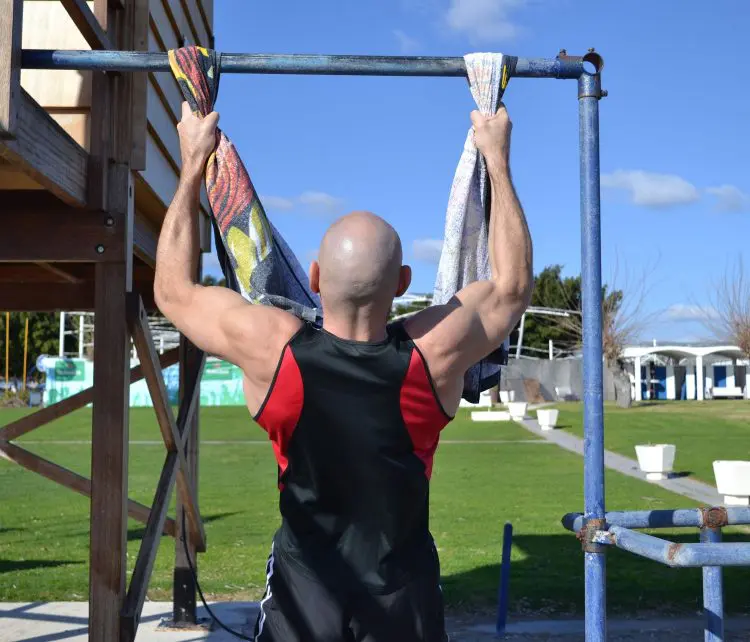
How to do it:
- Hang two towels over your pull-up bar. Grip the two ends of each towel tightly in your hands, and then hang with your arms straight and feet off the floor. Pull your shoulders down and back.
- Without kicking or swinging, bend your arms and pull your shoulders up to your hands.
- Slowly extend your arms, descend, and repeat.
- Can’t manage pull-ups? Just do towel grip dead hangs instead.
7. Rubber Band Finger Extensions
Remember how there are two sets of forearm muscles – flexors and extensors? This exercise only works the extensors. Done using a small resistance band or regular stationary-type rubber band, this exercise could help prevent the flexor/extensor muscle strength imbalances that can lead to hand and wrist pain.
However, don’t be surprised if you aren’t very good at this exercise; these muscles are often underused and weak as a result.
How to do it:
- Take a small rubber band and put it over your fingertips and thumbs.
- Open your fingers against the resistance offered by the band.
- Slowly bring your fingertips back together and repeat.
Wrist Roller – Wrapping Up
Old-school strongmen used to take huge pride in their hand and forearm strength. Many of them performed remarkable feats, such as bending railroad spikes, lifting anvils, tearing phone books and packs of carbs in half, pushing nails through planks of wood, and folding frying pans – something Eddie Hall has also done.
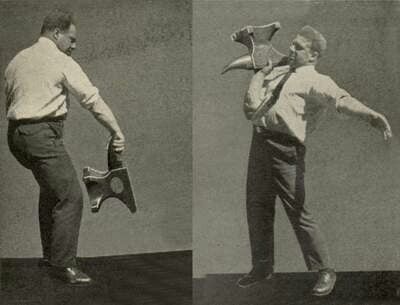
It’s no coincidence that many of these athletes also did plenty of work with a wrist roller. While you may never fold a frying pan or bend a railroad spike, that doesn’t mean you can’t develop muscular forearms and a formidable grip. If nothing else, strong hands mean never having to worry about your grip failing during rows or deadlifts.
Make and use a wrist roller; your forearms will thank you for it!
References:
1 – PubMed: Anatomy, Shoulder and Upper Limb, Forearm Muscles https://www.ncbi.nlm.nih.gov/
Interested in measuring your progress? Check out our strength standards for Wrist Curl, Pull Ups, Hammer Curl, and more.

